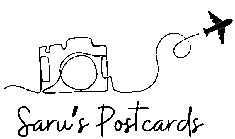🍽️ 10 Must-Try Nepali Foods (with Culture & Origins)
Planning a trip to Nepal? While you’re probably excited about the Himalayas, ancient temples, and colorful culture, don’t forget one of Nepal’s best-kept secrets: the food! From flavorful dumplings to fermented mountain greens, here’s your ultimate list of must-try Nepali dishes that will make your trip even more unforgettable.
🥘 1. Dal Bhat
What it is: A platter of steamed rice (bhat) with lentil soup (dal), seasonal vegetables, achar (pickle), and sometimes meat curry.
Cultural background: This is Nepal’s most commonly eaten meal—often consumed twice a day by locals. Dal Bhat is not just food; it’s a fuel for life, especially for trekkers, farmers, and laborers who need sustained energy throughout the day. Sharing a Dal Bhat meal with family or friends is a sign of community and warmth.
Native details: Found across Nepal, but ingredients and spices vary by region. In the hilly regions, it often includes wild greens or seasonal herbs; in the Terai lowlands, mustard oil and chili are used more liberally for a punchier flavor.
Extra tip: Don’t hesitate to ask for a second helping of dal—the more, the merrier. Many locals believe that dal bhat eaten with love is the secret to energy and happiness.
Common saying: “Dal Bhat Power, 24 Hour!” You can find t-shirts with this text as well if you want a souvenir from Nepal.
Pro Tip: Try buffalo momo on the side if you’re feeling adventurous.
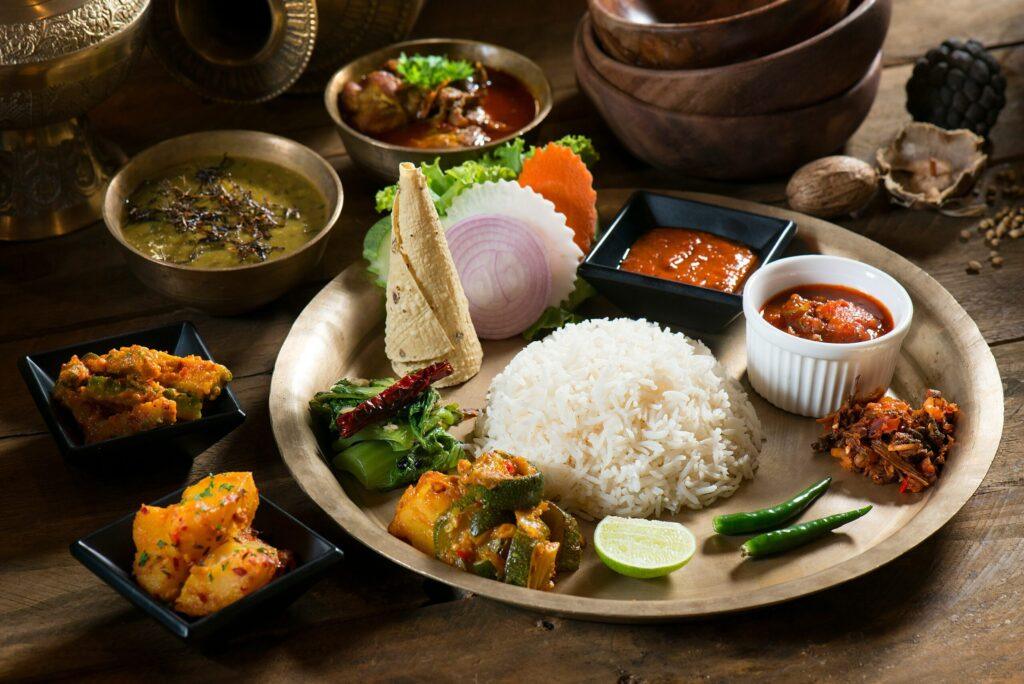
🥟 2. Momo
What it is: Dumplings filled with minced meat (buffalo, chicken) or vegetables, usually steamed or fried.
Cultural background: Influenced by Tibetan cuisine, momos became wildly popular in Nepal in the 1960s. Now a national obsession, they’re a beloved street snack and a party food that brings friends and families together.
Native details: Popular among Newar, Sherpa, and Tibetan communities. Buffalo, chicken, or vegetable fillings are most common, and they are often served with a spicy tomato-timur (Sichuan pepper) achar. The dumpling wrappers are soft but slightly chewy, perfect for soaking up the dipping sauce.
Extra tip: Fried momos or jhol momos (served in soup) are worth trying for a variation in texture and flavor.
👉 Want to make them at home? Check out my detailed momo recipe on Saru’s Diary—with step-by-step instructions, folding tips, and my go-to achar (dipping sauce).

🍜 3. Thukpa – A Himalayan Hug in a Bowl
What it is: A hearty noodle soup with vegetables, meat of choice, and warming Himalayan spices.
Cultural background: Thukpa comes from Tibetan refugee communities and is popular in mountainous regions. It’s a staple comfort food during winter months and represents warmth, hospitality, and home-style cooking.
Native details: Widely eaten in Mustang, Solukhumbu, and among Sherpas. Street stalls in cities now serve thukpa with a Nepali twist—spicier, sometimes with eggs, or additional local vegetables.
Extra tip: Sip the broth first before adding chili or vinegar—this allows you to appreciate the delicate layers of flavor. A sprinkle of fresh coriander can transform the soup into a fragrant, soul-warming meal.
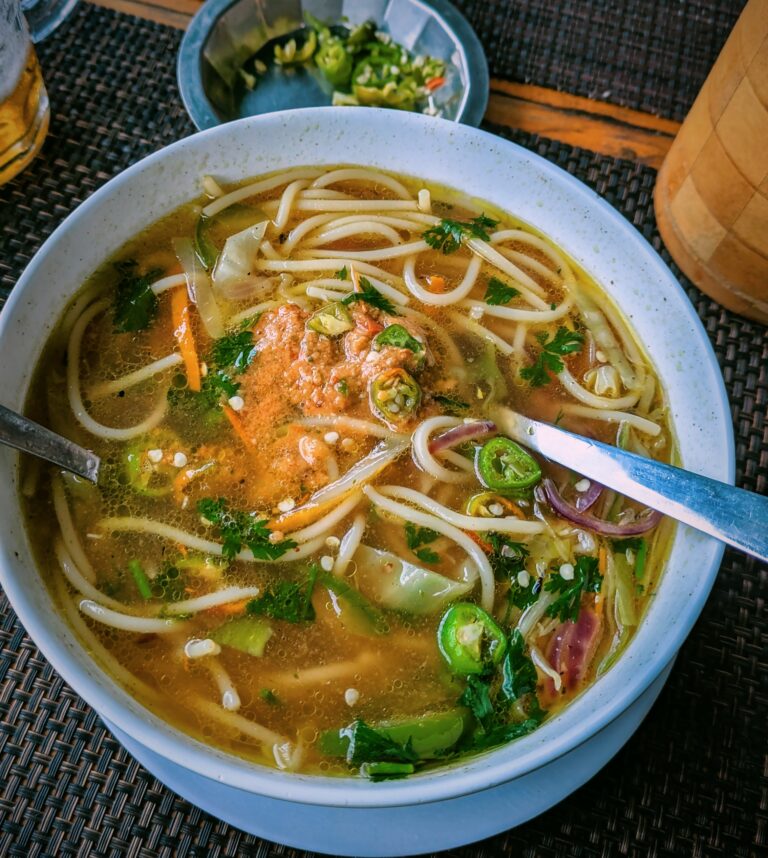
🍢 4. Sekuwa – Nepali BBQ Skewers
What it is: Grilled skewers of marinated meat (goat, pork, chicken) cooked over wood fire.
Cultural background: Traditionally prepared during festivals and gatherings, especially in eastern Nepal. Sekuwa is often enjoyed with raksi (local alcohol) and music, making it a symbol of celebration and community.
Native details: Popular in regions like Dharan, Sunsari, and Kathmandu’s old neighborhoods like Kirtipur. The marinade includes mustard oil, cumin, coriander, garlic, and chili. The smoky aroma from the wood fire enhances the flavor of the tender, juicy meat.
Extra tip: Try sekuwa with freshly squeezed lemon over the top—the tang perfectly complements the spices.
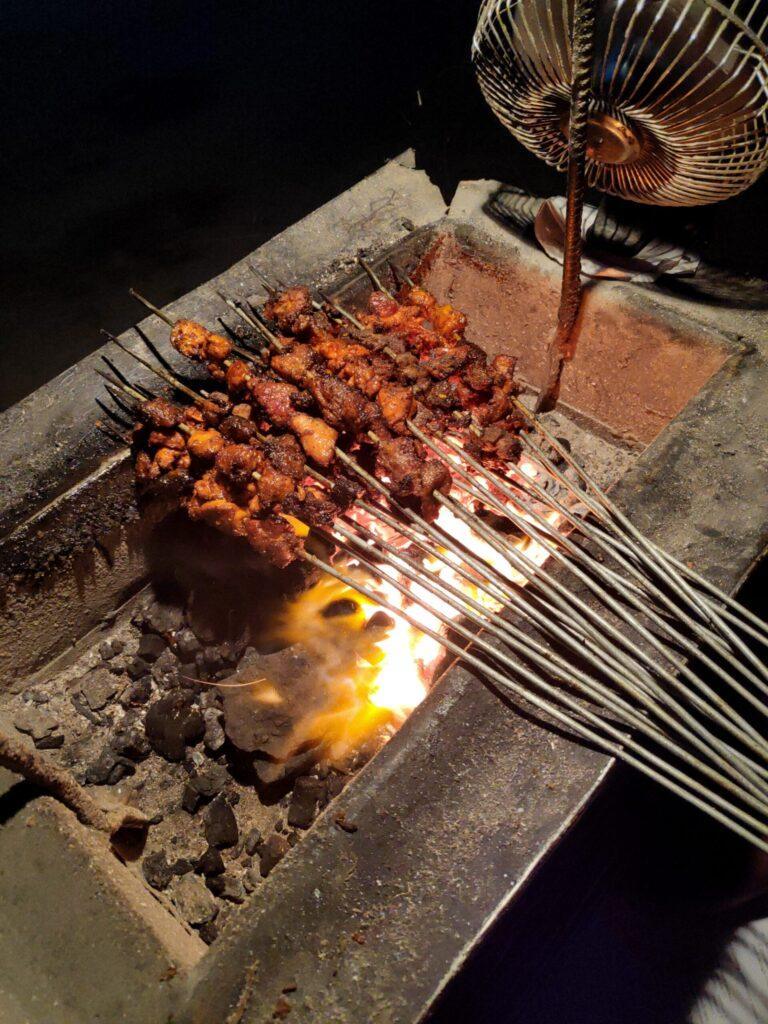
🍛 5. Samay Baji
What it is: A ceremonial Newari platter with beaten rice, barbecued meat (choila), boiled eggs, black soybeans, ginger, and pickles.
Cultural background: Eaten during Newar festivals, religious rituals, and family gatherings. Samay Baji symbolizes purity, prosperity, and continuity between generations. Each item on the platter has its own meaning and is carefully prepared.
Native details: Unique to the Kathmandu Valley. It’s a dish that connects generations, with techniques passed down in families for centuries.
Extra tip: Pair the platter with a small sip of sweetened milk tea for a balanced flavor experience.
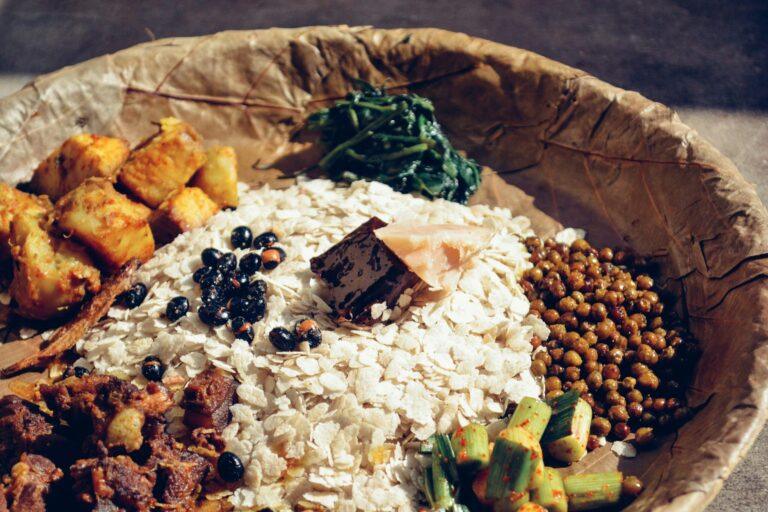
🥬 6. Gundruk
What it is: Fermented leafy greens (mustard, spinach, or radish leaves), often used in soups or pickles.
Cultural background: A traditional preservation method in mountain communities, Gundruk allows families to store greens during the harsh winters. It’s rich in fiber, probiotics, and has a tangy, earthy flavor.
Native details: A rural staple in hilly areas like Ilam, Gorkha, and Dhading. Every household has its own method for drying and fermenting, giving each batch a unique taste.
Extra tip: Gundruk soup served with a sprinkle of garlic and chili makes a flavorful, warming dish. It pairs beautifully with Dal Bhat or rice.

🌯 7. Chatamari
What it is: A Newari rice flour crepe, topped with egg, vegetables, or minced meat.
Cultural background: Sometimes called “Nepali pizza,” Chatamari is traditionally made during festivals and celebrations by the Newar people. It’s a festive, social food that brings neighbors together.
Native details: Exclusive to the Kathmandu Valley, Chatamari is not eaten daily but prepared for special family events or religious festivals.
Extra tip: Try it with a drizzle of mustard oil for an authentic flavor that enhances the toppings.
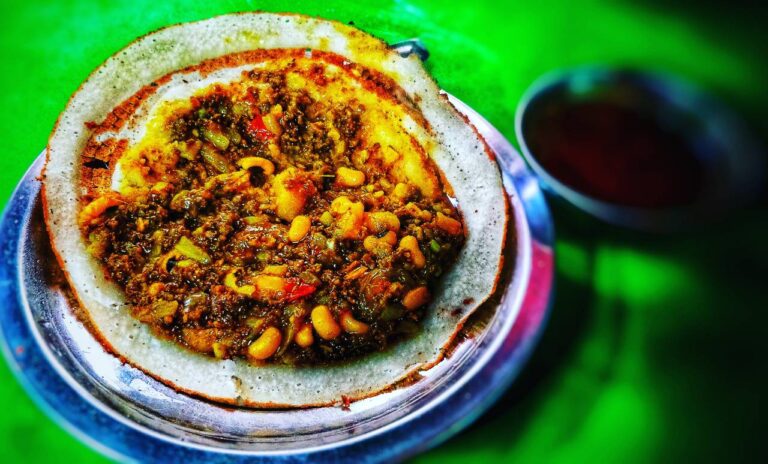
🥚 8. Choila
What it is: Spiced and smoked meat (usually buffalo), served cold with beaten rice.
Cultural background: A ritual food in Newar communities, especially during Mha Puja (celebration of the self) and Yenya Punhi (Indra Jatra festival).
Native details: Originates in Kathmandu Valley. The meat is seared over straw and mixed with mustard oil, garlic, and fenugreek seeds for a distinct smoky taste.
Extra tip: Eating Choila with fresh ginger and chili achar elevates the flavors and adds a sharp, spicy contrast.

🍢 9. Sukuti
What it is: Dried and smoked meat, typically buffalo or goat, spiced and eaten as a snack or mixed into curries.
Cultural background: Originated as a preservation technique in mountain regions, Sukuti is a favorite in cold areas where fresh meat is scarce.
Native details: Popular among Gurung, Magar, and Tamang communities in western and mid-hill Nepal (e.g., Lamjung, Rasuwa). Often enjoyed with raksi or tongba during social gatherings.
Extra tip: Chop Sukuti into small pieces and sauté with onions and chilies for a quick, flavorful stir-fry.
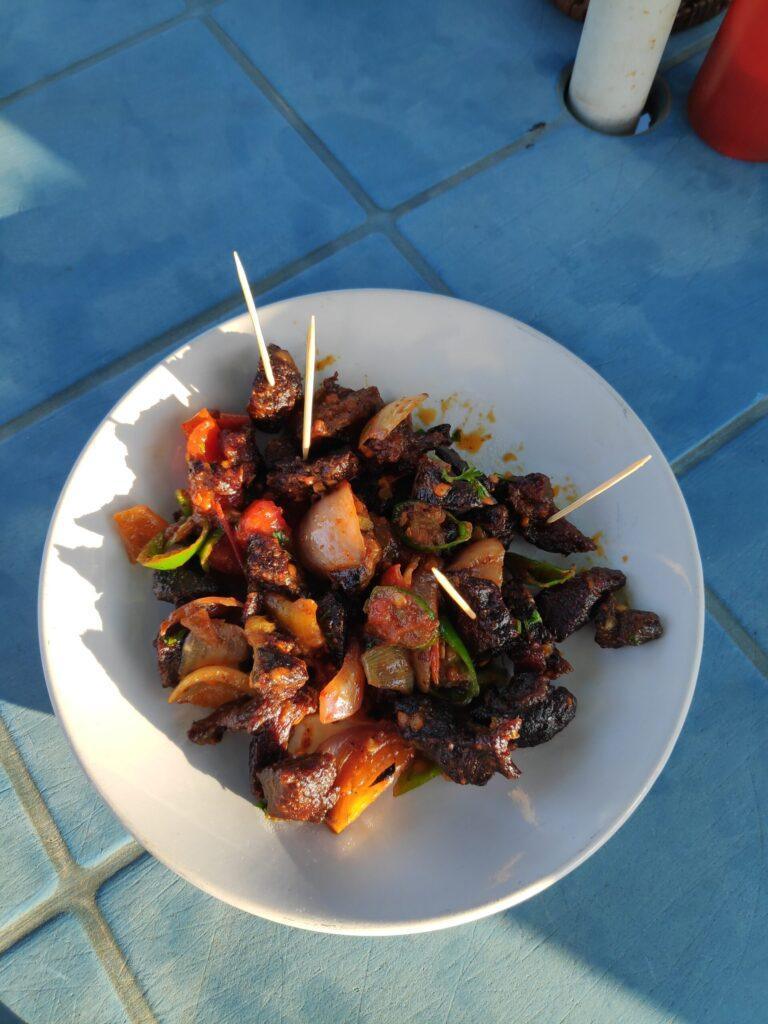
🍶 10. Tongba
What it is: Fermented millet beer served in a wooden or bamboo mug with a metal straw. Hot water is poured over the grains and sipped slowly.
Cultural background: A traditional drink of the Limbu and Rai ethnic groups from eastern Nepal. Tongba is shared communally, symbolizing friendship, hospitality, and warmth during cold months.
Native details: Found in regions like Ilam, Taplejung, and Sankhuwasabha. The fermented grains impart a slightly sour flavor, balanced by the warmth of the water.
Extra tip: Keep adding hot water to the mug several times—each refill gives a new depth of flavor to the communal experience.

🧭 Bonus Tips
1. Tips for Foodies Traveling in Nepal
Try local eateries and homestays. They serve the most authentic versions.
Don’t worry about spice—just ask for “mild” if needed.
Use your right hand for eating (or ask for a spoon!).
Street food is fine—just go to busy spots with high turnover.
2. Try Seasonal or Festival-Specific Foods
Yomari: A sweet dumpling filled with sesame and molasses, made during Yomari Punhi festival (Newar festival in December).
Teej Special Thali: During the women’s festival of Teej, you’ll see platters full of sweets like sel roti, anarsa, and yogurt-based desserts.
Nepali cuisine is a rich tapestry of flavors, textures, and cultural stories. From hearty Dal Bhat to ceremonial Samay Baji, every dish connects travelers to Nepal’s landscapes, festivals, and communities. Exploring these culinary delights is a journey in itself—a delicious gateway to the heart of the Himalayas.
Have you tried any of these foods on your travels, or is there a Nepali dish you’re dying to taste? Share your experiences, tips, or questions in the comments below—I’d love to hear from you!
